To say I’m pretty jazzed about the possibilities of my classroom learning by connecting with other classrooms and people would be a bit of an understatement. My class regularly learns from and with students and others from across North America and in fact from around the world using social media tools such as Skype, Twitter and blogging.
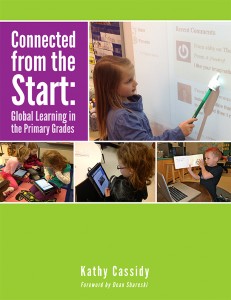 It was exactly one year ago today that I published my first book, Connected From the Start: Global Learning in the Primary Grades. In that time, it has been my observation that more and more teachers are becoming interested in connecting their classroom. I frequently see teachers on Twitter asking if other classrooms would like to connect with theirs or I receive emails from teachers asking me how to get started with connecting.
It was exactly one year ago today that I published my first book, Connected From the Start: Global Learning in the Primary Grades. In that time, it has been my observation that more and more teachers are becoming interested in connecting their classroom. I frequently see teachers on Twitter asking if other classrooms would like to connect with theirs or I receive emails from teachers asking me how to get started with connecting.
I started the list below because, when I see these queries, my first reaction is usually “which curriculum outcomes or standards are you looking to teach?” followed closely by “what tool would you like to use to connect?”
Connecting just for the sake of connecting is a valuable activity as it exposes children to other places and cultures, helps to teach online safety and etiquette and helps to prepare them for the hyper-connected world they will eventually be living and working in.
But if you really want bang for your buck, try connecting around a curricular theme or outcome. Kids really do learn best from other kids.
Keeping my students (meaningfully) connected
As the one-year anniversary of the publication of my book about connecting classrooms approached, I wondered about the ways I had connected my classroom over the past months. Was I still as actively involved with connecting as I had been before I published the book? Or was I content to let that slide?
I went back through my classroom and professional blog posts and photos and was relieved to discover that yes, connecting was still high on our classroom priority list! Because it has become such an integral and natural part of the way we learn, it just doesn’t stand out in my mind the way it did in the past.
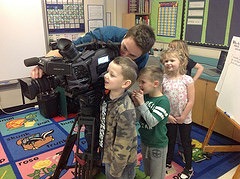 I decided that in celebration of this anniversary, I would make a list of the ways I had connected my students in the past year as suggestions for teachers just beginning their connected classroom journey. Initially, I was going to make a list of all the ways I had seen other teachers connecting, but by the time I had finished with my own list, I found it was quite long.
I decided that in celebration of this anniversary, I would make a list of the ways I had connected my students in the past year as suggestions for teachers just beginning their connected classroom journey. Initially, I was going to make a list of all the ways I had seen other teachers connecting, but by the time I had finished with my own list, I found it was quite long.
So I’ve stopped here. I hope you will forgive my self-centeredness and add your own suggestions and links for connecting in the comments. This list is by no means comprehensive.
A couple more notes before I get on with it. First, there are lots of great tools out there to help classrooms connect. The ones below are the ones I have found to be most effective in my classroom. Second, these suggestions are all primary-grades specific (my students are almost all six years old), but it takes very little imagination to think of a way to make them work with older students too.
And now, finally, my list of suggestions to get you started connecting your classroom…
Using Skype or Google Hangout
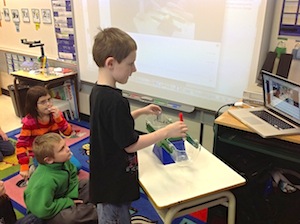 Play measurement games with a class studying the same concepts
Play measurement games with a class studying the same concepts- Play Guess My Shape with geometric shapes and another class learning the same concept
- Play Mystery Number with another class
- Play Is This a Pattern? or Is This a Word? etc. with another class
- Connect with another classroom to find out about special events or celebrations they have.
- Do Reader’s Theatre with another classroom
- Practice phonics skills by making up imaginary words (such as “zape”) for another class to decode
- Invite someone (perhaps a pre-service teacher?) to teach a concept to your class
- Practice reading out loud to someone—a pre-service teacher, a grandmother or anyone who is willing to listen
Using Twitter
- Tweet about things that happen in the classroom
- Let the children tweet about events that are special to them.
- Tweet riddles about 2D and 3D shapes
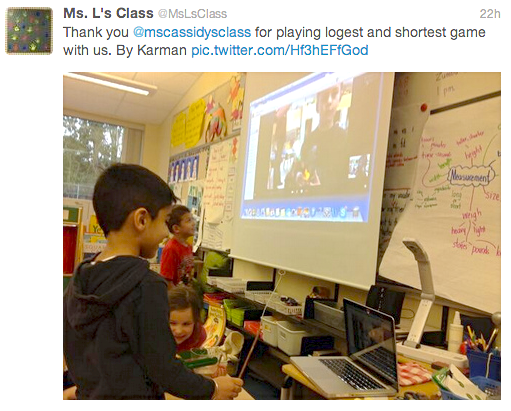 Play Guess My Number as you would twenty questions
Play Guess My Number as you would twenty questions- Tweet ways to show one hundred
- Tweet pictures of patterns or guess someone else’s pattern
- Introduce the literary concept of “voice” and tweet as if you are a character in a book such as Little Red Riding Hood or the Gingerbread Man
- Tweet about Halloween costumes
- Take a picture of your lunch and tweet it. Compare it with other lunches from around the world.
- Ask questions and learn from the tweets of other classrooms.
- Make up and tweet fun facts about Santa, the Easter Bunny, leprechauns etc.
- Tweet as a backchannel to show specific literary or visual devices while viewing a video
- Make up and tweet your own riddles
Using Blogs
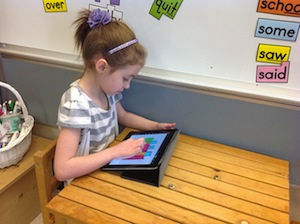 Children write about events in their own life
Children write about events in their own life- Read blog comments aloud as a shared reading experience
- Read the blogs of other classrooms
- Comment on the posts of other classes or students either as a class or as individuals
Video
- Make a video to answer questions from a class far away
- Issue a challenge to other classes or individuals
- Make a video tour of your classroom. Other classrooms may respond with a tour of their own!
So there you have it. All of the above ideas have helped me to meet an English Language Arts or Mathematics outcome in my classroom. I hope they help you as well.
Kathy Cassidy
Latest posts by Kathy Cassidy (see all)
- Technology in the Classroom: Embrace the Bumpy Ride! - March 21, 2019
- Passion Based Learning (PBL) in Primary: Making Up the Rules - March 13, 2019
- Passion Based Learning (PBL) in the Primary Grades: Who Asks the Questions? - February 17, 2019

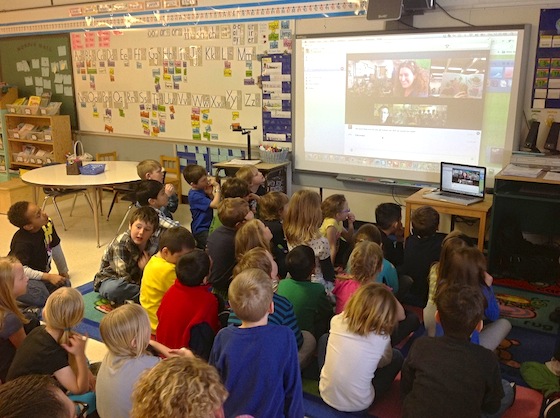

Thank you for sharing so many concrete examples that are tied to curriculum outcomes. An intersting and inspiring. I can sense your genuine enthusiasm here in Regina, Saskatchewan.
Thanks, Lisa! I AM enthusiastic about this. And I live only 40 miles away from you in Moose Jaw, Saskatchewan!
Fantastic ideas, Kathy. I plan on sharing this post with my K-5 teachers.